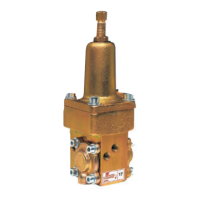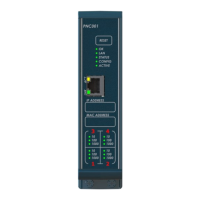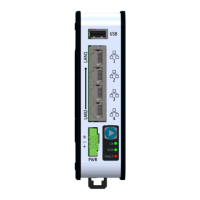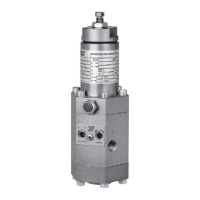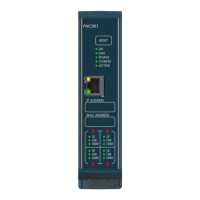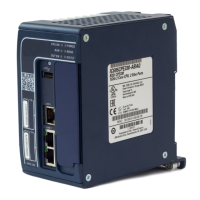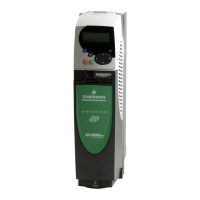Powerdrive F300 Getting Started Guide 85
Issue Number: 5
Safety
information
Product
information
Mechanical
installation
Electrical
installation
Getting started
Basic parameters
(Menu 0)
Running the
motor
Optimization
NV Media Card
Operation
Further
information
UL listing
information
8 Optimization
This chapter takes the user through methods of optimizing the drive set-up and maximize the
performance. The auto-tuning features of the drive simplify the optimization tasks
8.1 Motor map parameters
8.1.1 Open loop motor control
Pr 00.046 {05.007} Rated Current Defines the maximum continuous motor current
• The rated current parameter must be set to the maximum continuous current of the motor. The motor rated
current is used in the following:
• Current limits (see section 8.3
Switching frequency on page 98, for more information).
• Motor thermal overload protection (see section 8.2
Motor thermal protection on page 96, for more
information)
• Vector mode voltage control (see Open Loop Control Mode (00.007), later in this table)
• Slip compensation (see Enable Slip Compensation (05.027), later in this table)
• Dynamic V/F control
Pr 00.044 {05.009} Rated Voltage
Defines the voltage applied to the motor at rated
frequency
Pr 00.047 {05.006} Rated Frequency
Defines the frequency at which rated voltage is
applied
The Rated Voltage (00.044) and the Rated
Frequency (00.047) are used to define the voltage to
frequency characteristic applied to the motor (see
Open Loop Control Mode (00.007), later in this
table). The Rated Frequency (00.047) is also used in
conjunction with the motor rated speed to calculate
the rated slip for slip compensation (see Rated
Speed (00.045), later in this table).
Pr 00.045 {05.008} Rated Speed Defines the full load rated speed of the motor
Pr 00.042 {05.011} Number Of Motor Poles Defines the number of motor poles
The motor rated speed and the number of poles are used with the motor rated frequency to calculate the rated
slip of induction machines in Hz.
Rated slip (Hz) = Motor rated frequency - (Number of pole pairs x [Motor rated speed / 60]) =
If Pr 00.045 is set to 0 or to synchronous speed, slip compensation is disabled. If slip compensation is required
this parameter should be set to the nameplate value, which should give the correct rpm for a hot machine.
Sometimes it will be necessary to adjust this when the drive is commissioned because the nameplate value may
be inaccurate. Slip compensation will operate correctly both below base speed and within the field-weakening
region. Slip compensation is normally used to correct for the motor speed to prevent speed variation with load.
The rated load rpm can be set higher than synchronous speed to deliberately introduce speed droop. This can be
useful to aid load sharing with mechanically coupled motors.
Pr 00.042 is also used in the calculation of the motor speed display by the drive for a given output frequency.
When Pr 00.042 is set to ‘Automatic’, the number of motor poles is automatically calculated from the rated
frequency Pr 00.047, and the motor rated speed Pr 00.045.
Number of poles = 120 x (Rated Frequency (00.047) / Rated Speed (00.045)) rounded to the nearest even
number.
Output
voltage
Pr / 2
00.044
Pr
00.044
Pr / 2
00.047
Pr
00.047
Output
frequency
Output voltage characteristic
00.047
00.042
2
------------------
00.045
60
------------------
×
⎝⎠
⎛⎞
=
Powerdrive F300 Getting Started Guide English Iss2.book Page 85 Tuesday, July 28, 2015 3:23 PM
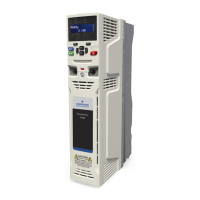
